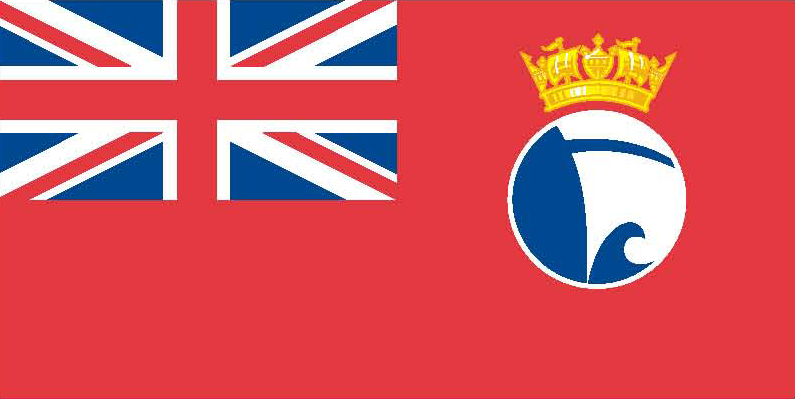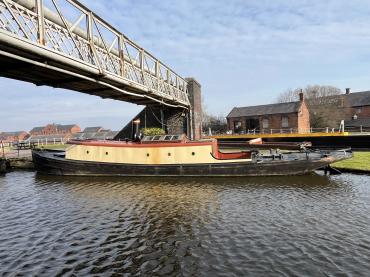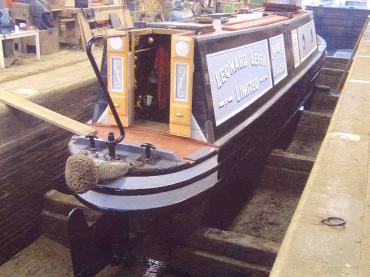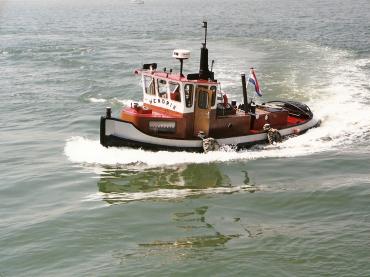Details
Construction
Dimensions
History
WHITE HEATHER was built by Watson of Gainsborough at Beckenham on the Trent in 1932 for the Borough of St Marylebone as a refuse tug. She is a copy of a tug built in 1908 originally called BIRMINGHAM and then renamed TYBURN, also owned by Marylebone Council. She was originally fitted with a 2 cylinder semi-diesel Robey Lincoln No 46441 which offered 44hp at 400 rpm. She worked on Section 5 in the Paddington area and was registered there as number 330. In 1939 she was taken over by Thomas Clayton of Paddington and worked extensively on refuse disposal to their pits at Hayes, Yeading and West Drayton. WHITE HEATHER passed to British Waterways on nationalisation and, in December 1958, had a Lister Freedon Engine installed which developed 32hp at 1500 rpm. In 1972, she was acquired by T & D Murrells of Adelaide Dock, during which time she cruised extensively around many of the country's canals. She is at present fitted with a 4 litre 6 cylinder Toyota 2H diesel engine of (104HP when new) originally from a Landcruiser vehicle, and is used both as a houseboat and for cruising. She is the only remaining narrow beam tug built for the Regent's Canal and one of only four round bilge canal tugs still in existence.
Significance
What is the vessel’s ability to demonstrate history in her physical fabric?
Evidence for designs, functions, techniques, processes, styles, customs and habits or uses and associations in relation to events and people. How early, intact or rare these features are may impact on significance.
WHITE HEATHER is a single-decked, riveted steel canal tug, built in 1932 by J.S. Watson of Gainsborough at Beckenham on the Trent for the London Borough of St Marylebone as a refuse tug. She is a copy of a tug built in 1908 originally called BIRMINGHAM and then renamed TYBURN, also owned by Marylebone Council. Design features include a raised and covered deck along with a high central cabin were common to canal tugs of the period.
WHITE HEATHER’s fabric has been subject to some reconstruction or adaptation in response to her changing uses. Her hull of steel construction is largely as constructed, with some plating work undertaken, although some underwater plates were welded rather than riveted. In 1972 she was converted for residential and cruising purposes. Her accommodation spaces have been updated over time. Modern coatings and specialized preparations have been used to minimize deterioration.
She was originally fitted with a single 2-cylinder semi-diesel Robey Lincoln engine giving 44hp at 400 rpm. In 1958 this was replaced with a Lister Freedon Engine which developed 32hp at 1500 rpm. She has subsequently been fitted with a 4 litre 6-cylinder Toyota 2H diesel engine 104HP obtained from a Landcruiser. She is now on her fourth engine.
What are the vessel’s associational links for which there is no physical evidence?
Associations with people or places. Off-ship research.
WHITE HEATHER has strong regional significance having originally worked on Section 5 in the Paddington area towing refuse barges for the London Borough of St Marylebone. In 1939 she was taken over by Thomas Clayton & Co. and worked extensively on refuse disposal to their pits at Hayes, Yeading and West Drayton. She passed into British Waterways ownership on nationalisation. In 1972, she was acquired by T & D Murrells of Adelaide Dock, during which time she cruised extensively around many of the country's canals.
WHITE HEATHER is the only remaining narrow beam tug built for the Regent's Canal and is one of only four round bilge canal tugs still in existence. She was selected for participation in the Queen's Diamond Jubilee Pageant on 3 June 2012. WHITE HEATHER was recorded on the National Register of Historic Vessels in 2000 and is a member of the National Historic Fleet.
How does the vessel’s shape or form combine and contribute to her function?
Overall aesthetic impact of the vessel, her lines, material she was built from and her setting. Does she remain in her working environment?
WHITE HEATHER was designed and built specifically to serve as a refuse tug operating in the Regent Canal. This necessitated her being of narrow beam and sufficiently powerful to tow a number of refuse barges simultaneously. The original fitting of a single 2-cylinder semi-diesel Robey Lincoln engine giving 44hp at 400 rpm, along with her raised superstructure and cabin, meant that she was entirely fitted to her intended purpose.
Aesthetically, WHITE HEATHER is representative of her time, being based on a pattern that was used for many canal tugs in the 1920s and 30s. The vessel was built for practicality rather than aesthetic appearance, but her black hull, brown painted superstructure, and raised cabin give her a distinctive appearance, making her readily recognisable when present at canal boat events. She is an important survivor and reminder of Britain’s canal-based heritage.
WHITE HEATHER was bought by her current owner in 2021 and remains in operational use, both as a houseboat and for cruising.
Sources:
National Historic Ships UK Files.
Historic Narrow Boat Club, https://hnbc.org.uk/boats/white-heather.
Canal World Discussion Forum, https://www.canalworld.net/forums/index.php?/topic/66781-tugs-white-heather-and-tyburn-where-are-they-now/
Key dates
-
1932
Built by J. S. Watson of Beckingham near Gainsborough
-
1932
Worked as a refuse tug for the borough of St Marylebone
-
1939
Acquired by Thomas Clayton of Paddington
-
1958
Passed to British Waterways and a Lister Freedom engine installed
-
1972
Acquired by T. & D. Murrells of Adelaide Dock and used for residential and cruising purposes
-
2012
Vessel selected for Queen's Diamond Jubilee Pageant on 3 June 2012
Own this vessel?
If you are the owner of this vessel and would like to provide more details or updated information, please contact info@nationalhistoricships.org.uk









